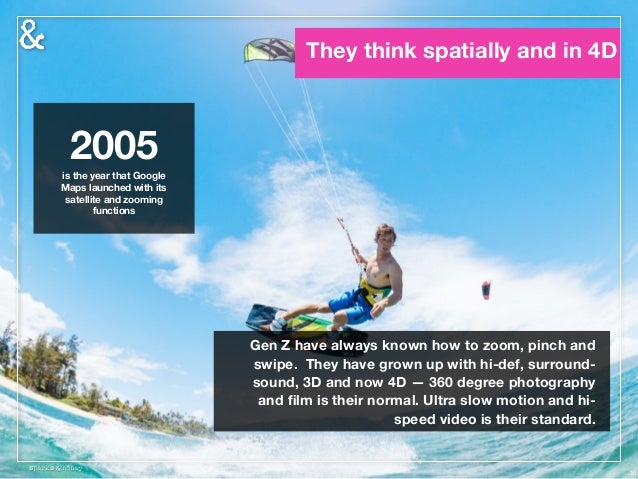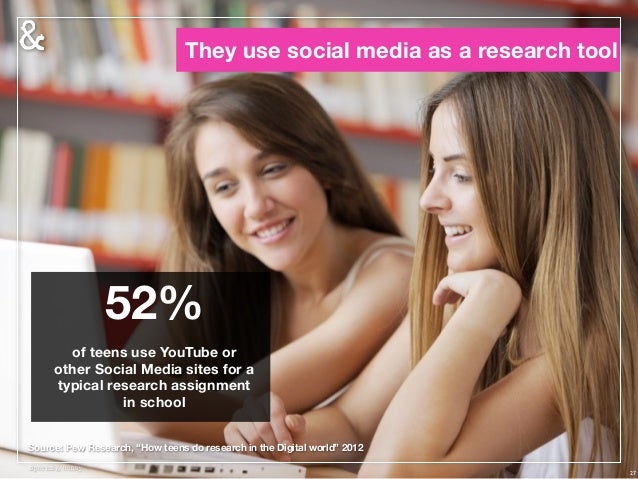Archive of ‘media literacy’ category
Adobe InDesign – intro
Contact us:
Prezi Design Strategies
Prezi Design Strategies
http://kairos.technorhetoric.net/18.1/disputatio/apostel/index.html
digital storytelling
Stories are for sorting and storing
http://homes.chass.utoronto.ca/~lachance/S6D.HTM
> Willard,
>
> The post 29.126 has been niggling at me for days. I originally want to
> reply with a simple observation that the appeal to storytelling is
> cast in such a way to avoid the complications of narration’s relation
> to narrative (the telling and the told; shown and said). But it was
> the theme of “borrowing” from one domain by another that leads me to
> recall a counter-narrative where there is no need to borrow between
> domains since the military-industrial-entertainment complex is one entity.
>
> I contend that fundamental to human interaction is narration:
> attentiveness to how stories are related. Stories are for sorting and
> storing. *Sometimes this soothes paranoia induced by too much
> linearity.*
>
> A while ago (1996), I explored recursivity and narrativity. My
> starting point was the ability to ask questions (and learn from one’s
> bodily reactions). The musings may or may not have military relevance.
> Judge for
> yourselves:
>
> <quote>
>
> Pedagogical situations are sensory. They are also interpersonal.
> Because they are sensory this makes even learning by oneself interpersonal.
> Egocentric speech is like a dialogue between the senses. In
> Vygotsky’s and Luria’s experiments, children placed in problem-solving
> situations that were slightly too difficult for them displayed egocentric speech.
> One could consider these as self-induced metadiscursive moments. The
> self in crisis will disassociate and one’s questionning becomes the
> object of a question.
>
> Not only is the human self as a metabeing both fracturable and
> affiliable in itself, it is also prone to narrativity. That is, the
> human self will project its self-making onto the world in order to
> generate stories from sequences and to break stories into recombinant
> sequences. Its operations on signs are material practices with consequences for world-making.
>
> The fracturable affiliable self calls for reproductive models suitable
> to the interactions of multi-sensate beings, models that render dyads
> dialectical, questionable, answerable. Narrativity understood
> dialectically does not merely mean making sequences or strings of
> events into stories but also stories into things, strung together for
> more stories. From such an understanding, emerge non-dyadic
> narratives of reproduction, narratives where a thing-born transforms
> itself into an event, comes to understand itself as a process.
>
> </quote>
>
> http://homes.chass.utoronto.ca/~lachance/S6D.HTM
>
> Funny to consider that those remarks were based in a consideration of
> language and feedback mechanisms. Make me think that the storytelling
> as “potent form of emotional cueing” may be directed to undesired
> responses such as greater self-reflexivity. And depending on how they
> are parsed, Hollywood films can contribute to undesired responses
> including escape. 🙂
>
> Francois Lachance, Scholar-at-large
> http://www.chass.utoronto.ca/~lachance
>
> to think is often to sort, to store and to shuffle: humble, embodied
> tasks
>
> On Mon, 29 Jun 2015, Humanist Discussion Group wrote:
>
>>
>>
>>
>>
>> Sharon Ghamari-Tabrizi, in “The Convergence of the Pentagon and
>> Hollywood” (Memory Bytes: History, Technology, and Digital Culture, ed.
>> Rabinovitz and Geil, 2004), describes in some detail the adoption by
>> the U.S. military of the entertainment industry’s storytelling
>> techniques implemented by means of simulation. This chapter follows
>> on from her excellent “Simulating the Unthinkable: Gaming Future War
>> in the 1950s and 1960s”, Social Studies of Science 30.2 (2000). In
>> the 2004 piece she describes a U.S. National Research Council
>> workshop in October 1996 at which representatives from film, video
>> game, entertainment and theme-parks came together with those from the
>> Department of Defense, academia and the defense industries. There is
>> much about this convergence that we might productively take an
>> interest in. Let me, however, highlight storytelling in particular.
>>
>> In a military context, Ghamari-Tabrizi points out, skilled
>> storytelling techniques are used to help participants in a VR
>> environment sense that they are in a real environment and behave
>> accordingly. Storytelling functions as a potent form of emotional
>> cueing that would seem to elicit the desired responses. But
>> especially interesting, I think, is the fact that “many conference
>> participants argued that the preferred mode of experiential immersion
>> in electronic media is not the unframed chaos of hypertext, but
>> old-fashioned storytelling.” She quotes Alex Seiden of Industrial
>> Light and Magic (note the date — 1996): “I’ve never seen a CD-ROM
>> that moved me the way a powerful film has. I’ve never visited a Web
>> page with great emotional impact. I contend that linear narrative is
>> the fundamental art form of humankind: the novel, the play, the film… these are the forms that define our cultural experience.”
>>
>> Comments?
>>
>> Yours,
>> WM
>> —
>> Willard McCarty (http://www.mccarty.org.uk/), Professor, Department of
>> Digital Humanities, King’s College London, and Digital Humanities
>> Research Group, University of Western Sydney
Turning Technophobia through Digital Storytelling
http://www.nmc.org/blog/turning-technophobia-through-digital-storytelling/
Video Storytelling in Social Media Marketing
Video Storytelling in Social Media Marketing
http://www.socialmediaexaminer.com/video-storytelling/
#1: Post Stories From Your Customers
#2: Create a Fictional Series
#3: Tell Personal Stories
#4: Shoot Documentary-Style Video
#5: Interview Guests
#6: Take Viewers Behind the Scenes
#7: Create Animated Stories
#8: Show Viewers How to Do Something
Other Stories to Tell With Video
There are a lot of interesting ways to integrate storytelling into your social videos. In addition to those featured above, here are some other stories that are well suited for video:
- Create a single video or a series of videos to highlight humorous situations related to your business or industry.
- If your company’s beginnings would make an interesting story, have the founder tell that story on video.
- Are your employees involved in interesting activities or challenges? Consider featuring those stories in your social videos.
- Tell a fictional but realistic story on video to educate viewers about your industry.
- Find a way to combine reality TV–style video with something relevant to your audience.
how to use pictures..
How Students Should Use Pictures from the Web
https://www.pinterest.com/pin/562387072193328450/

on media literacy
p. 134 How the different forms of literacy interact and support each other is a key question for future research, giventoday’s complex and convergent media and information environment
p. 135 Our findings support the growing demand for policymakers, educators, and community advocates to embrace media literacy as an important resource to fulfill the promise of digital citizenship.
Creating a Library App
Creating a Library App: Things to Know Before You Go Mobile
Tuesday, April 28, 2015 11AM-12PM PDT
Registration link: http://www.cla-net.org/?861
Mobile apps are a popular topic in libraries. But what does it take to create one and what kind of programming can you do with apps? Is an app the right solution, or should you create a responsive website? What is the process like, and what resources are needed? How do you manage privacy, security, and legal concerns? Who do you need to get the job done, and what skills should they have?
These are all important questions that should be asked (and answered) before you think about creating a mobile app. Learn from expert panelists from libraries and nonprofits who have created, developed, and managed mobile apps for their organizations. Panelists will share practical advice and information based on experience, as well as helpful tools and resources.
Participants will learn:
- The difference between a mobile app, a mobile site, and a responsive site
- Three important considerations when deciding whether or not to create a mobile app.
- Five tips for approaching the design of a mobile app, mobile site, or responsive site.
About the Presenters
- Stacey Watson is the Senior Librarian and certified scrum Master in the Digital User Experience Department at the Denver Public Library. She oversees the user experience and content strategy for the library’s websites, online catalog, and digital services. Most recently she and her team developed Volume, a responsive website featuring hand selected albums by local artists.
- Anna Jaeger and her team at Caravan Studios create mobile apps that are designed in partnership with nonprofit and community-focused organizations to meet the needs of their constituents. Anna has been a frequent speaker on nonprofit and environmental technology since 2007. Prior to her work with Caravan Studios, Ms. Jaeger was a founder and co-director of TechSoup Global’s GreenTech initiative and the director of TechSoup Global’s IT Engineering department.
- Ani Boyadjian has been a working librarian since 1990. An LAPL staffer since 1996, she is now Research & Special Collections Manager at the Los Angeles Public Library, where she also oversees the Library’s Digitization efforts. She most recently spearheaded the development of the ARchive LAPL app in a partnership with USC and app developers Neon Roots, to use augmented reality to tell stories about the historic Central Library.
information literacy and social media
library approach to information literacy. or WHAT IS information literacy?
is it the 90-ish notion of standing up in front of bored class and lecturing them how important is to use the online databases, which the university subscribe for
52% of teens use YouTube or other Social Media sites for a typical research assignment in school:
slide 29 out of 56:
Infographic from:
Should information literacy be about digital literacy? Geo-spatial knowledge?

Should information literacy include videos? Games?
Should information literacy be multiliteracy? Transliteracy?
https://blog.stcloudstate.edu/ims/2014/11/27/scholarly-communication-and-information-literacy/
This is what Gen Z will expect from information literacy in particular, from library and education in general:
https://www.youtube.com/watch?feature=player_detailpage&v=h11u3vtcpaY#t=314
social media in the library
please have two great articles on the use of social media in the library:
1. Experts as facilitators for the implementation of social media in the library
Vanwynsberghe, H.., Boudry, E.., Verdegem, P.., & Vanderlinde, R.. (2014). Experts as facilitators for the implementation of social media in the library? A social network approach. Library Hi Tech, 32(3), 529-545. doi:10.1108/LHT-02-2014-0015
Excellent article. Apparently, they do things differently in Belgium.
“Social media literacy” (SML) can be defined as not only the practical
and critically cognitive competencies possessed by users of social media, but also the
motivation to employ these media effectively and appropriately for social interaction
and communication on the web (Vanwynsberghe and Verdegem, 2013).
Repeated by me numerous times, but ignored consistently.
p. 530 Therefore, the aim of this study is to empirically assess how a social media expert, or the employee with the most knowledge and skills concerning social media, in the library facilitates, or impedes, the information flow and implementation of social media in the library.
p. 541 The findings suggest that such social media experts play a significant role in either supporting or constraining the information flow and implementation of social media.
5.2 A social media expert plays an important role in the library for spreading
information about social media Unsurprisingly, social media experts are the most central actors for giving social media information; they share more social media information with other librarians and rarely receive information in return. Any information they do receive mostly comes from a person skilled in social media use. The social media expert as the central actor in the information network has the power to facilitate or prevent information exchange about social media (Scott and Carrington, 2012).
this is, if the experts are ALLOWED to participate. What if the social media access is usurped by very few others?
even worse, what if the social media is decentralized across?
Woodsworth, A., & Penniman, W. D. (2015). Current Issues in Libraries, Information Science and Related Fields. Emerald Group Publishing.
